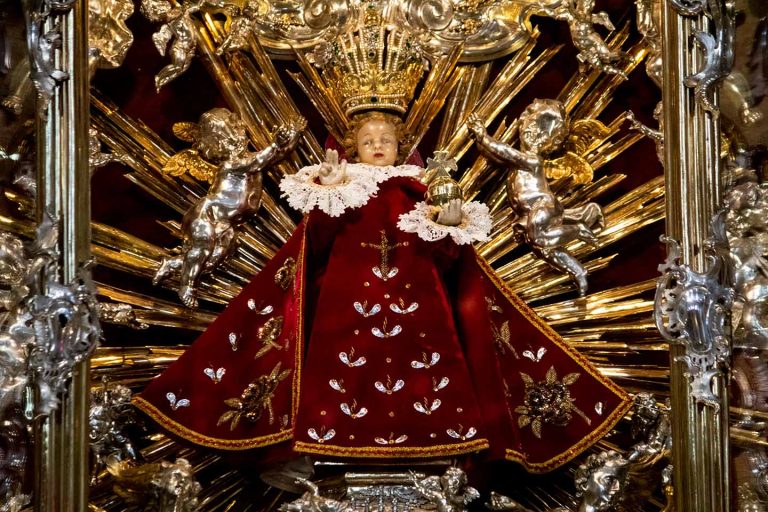
Infant of Prague
It seemed eminently meaningful to find myself, in the evening of the feast of Christ the King, on my knees before the Infant of Prague. The aesthetics of the statue and its shrine will appear differently to different people, but that is beside the point: what the monument expresses is that God, to become man, became a child. Dom Porion has written: ‘God made himself a child to heal our useless fears and to inspire us with confidence; for fear, lack of trust, and timidity constitute an ancient and grave illness that affects us all to a greater or lesser extent.’ This is true. There is a further dimension to this image. Having been made in Spain it was brought to Prague in rough conditions: it lost its hands. A Carmelite praying before the statue seemed to hear it say: ‘Give me hands and I will give you peace.’ He promptly restored them. Countless people have since found peace in the statue’s presence. Of course, there is also a parable in the story: each of us is called to be Christ’s hands in this world, instruments for the good he wishes to accomplish. Caritas Christi urget nos.
